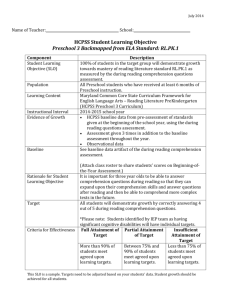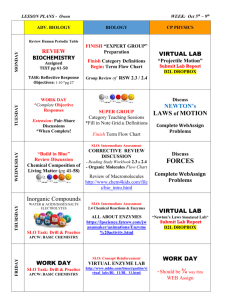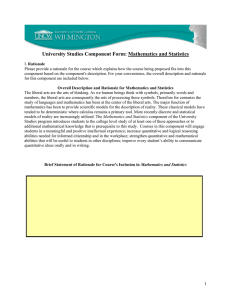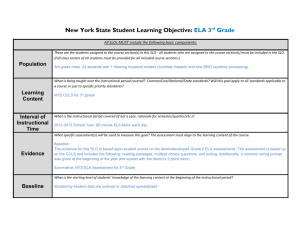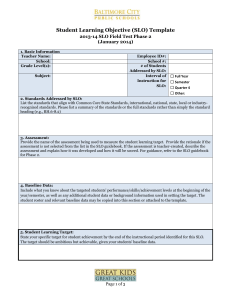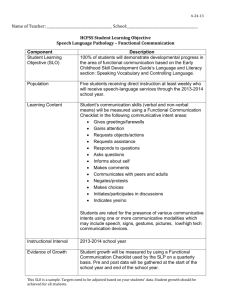Problem Solving - Transition to Common Core
advertisement
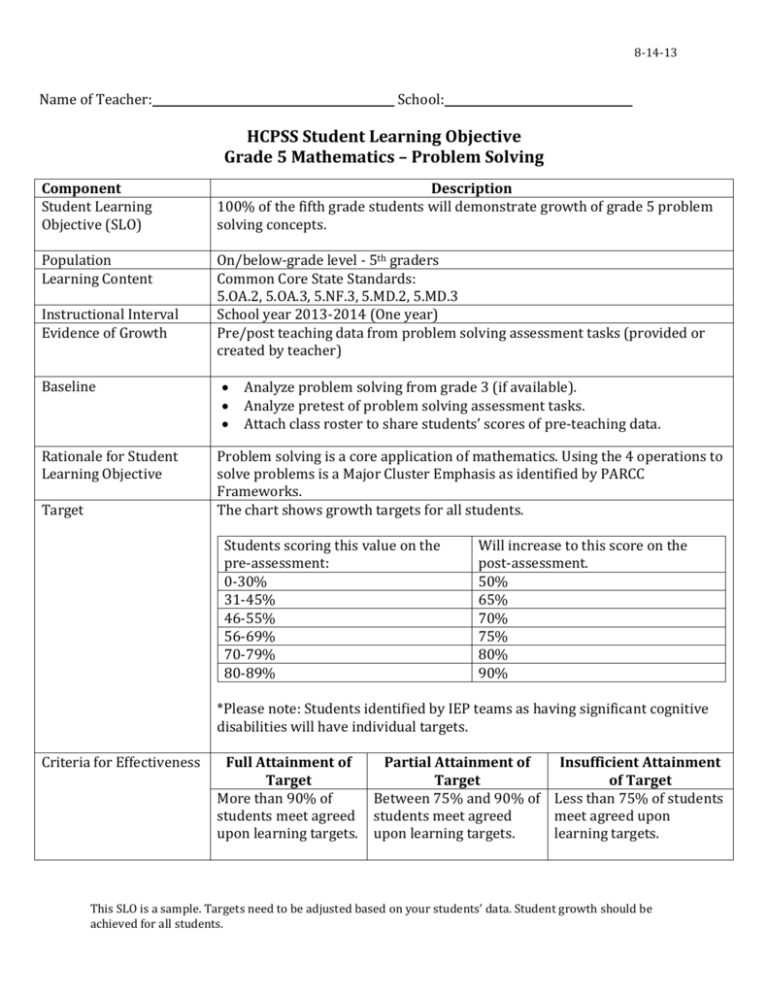
8-14-13 Name of Teacher: School: HCPSS Student Learning Objective Grade 5 Mathematics – Problem Solving Component Student Learning Objective (SLO) Description 100% of the fifth grade students will demonstrate growth of grade 5 problem solving concepts. Population Learning Content On/below-grade level - 5th graders Common Core State Standards: 5.OA.2, 5.OA.3, 5.NF.3, 5.MD.2, 5.MD.3 School year 2013-2014 (One year) Pre/post teaching data from problem solving assessment tasks (provided or created by teacher) Instructional Interval Evidence of Growth Baseline Rationale for Student Learning Objective Problem solving is a core application of mathematics. Using the 4 operations to solve problems is a Major Cluster Emphasis as identified by PARCC Frameworks. The chart shows growth targets for all students. Target Analyze problem solving from grade 3 (if available). Analyze pretest of problem solving assessment tasks. Attach class roster to share students’ scores of pre-teaching data. Students scoring this value on the pre-assessment: 0-30% 31-45% 46-55% 56-69% 70-79% 80-89% Will increase to this score on the post-assessment. 50% 65% 70% 75% 80% 90% *Please note: Students identified by IEP teams as having significant cognitive disabilities will have individual targets. Criteria for Effectiveness Full Attainment of Target More than 90% of students meet agreed upon learning targets. Partial Attainment of Insufficient Attainment Target of Target Between 75% and 90% of Less than 75% of students students meet agreed meet agreed upon upon learning targets. learning targets. This SLO is a sample. Targets need to be adjusted based on your students’ data. Student growth should be achieved for all students. 8-14-13 Strategies Be purposeful when planning lessons to include challenging mathematical tasks that elicit the Mathematics Practices in their students. Focus on representations for solving problems. Work with all addition/subtraction/multiplication/division problemsolving structures. Focus on problem solving strategies and avoid key word approach Monitor problem solving instructional progress. Apply problem solving to other concepts including measurement, fractions, and area/perimeter. Differentiate instruction and utilize small group instruction. Use multiple means of assessment including observation and paper/pencil assessment. This SLO is a sample. Targets need to be adjusted based on your students’ data. Student growth should be achieved for all students.
